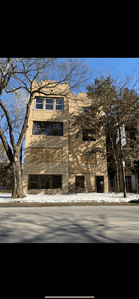The Risks of Vacant Property: Security, Maintenance, and Legal Challenges

Vacant properties present a unique set of challenges that can affect not only the property itself but also the surrounding community. From security issues and legal complications to maintenance concerns, the risks associated with vacant properties are significant. Understanding these risks and their associated costs is crucial for property owners to effectively manage and protect their investments. This article provides a comprehensive overview of the various risks linked to vacant properties, including the costs of securing and maintaining them, and strategies to mitigate these issues.
1. Security Risks and Costs
Vandalism and Theft
Vacant properties are often targeted by vandals and thieves due to their lack of activity and oversight.
- Vandalism: Damage such as graffiti, broken windows, and defaced walls can be expensive to repair. Costs for vandalism repairs can range from $500 to $5,000, depending on the extent of the damage.
- Theft: Commonly stolen items include appliances, copper piping, and HVAC systems. Replacing stolen components can lead to financial losses ranging from $1,000 to $10,000.
Costs of Securing the Property
To protect against vandalism and theft, property owners may need to invest in several security measures:
- Lock and Seal Services: Professional services to secure vacant properties by installing high-quality locks, boarding up windows, and adding physical barriers. Costs for these services generally range from $500 to $2,000.
- Alarm Systems and Surveillance: Installing security systems with alarms and surveillance cameras helps monitor and protect the property. Initial installation costs can be between $1,000 and $3,000, with ongoing monitoring fees ranging from $30 to $60 per month.
2. Risks from Squatters
Legal and Property Damage Issues
Squatters, or unauthorized occupants, can cause significant problems, including legal disputes and property damage.
- Legal Complications: Evicting squatters can be a lengthy and costly process. Legal fees and court costs can range from $1,000 to $5,000, depending on the complexity of the case.
- Property Damage: Squatters may cause damage such as alterations to electrical and plumbing systems, neglect of general upkeep, and other forms of abuse. Repairing this damage can cost between $2,000 and $10,000.
3. City Code Violations
Compliance Costs
Vacant properties must adhere to local building codes and regulations. Failure to comply can result in fines and additional costs.
- Code Violations: Common issues include unkempt exteriors, overgrown lawns, and failure to maintain structural integrity. Fines for code violations can range from $100 to $1,000 per infraction.
- Compliance Costs: Addressing these violations often requires hiring contractors for repairs, maintenance, and inspections. Costs can range from $500 to $5,000, depending on the nature and extent of the issues.
4. Maintenance Challenges
Weather-Related Problems
Vacant properties are vulnerable to weather-related issues, such as freezing pipes and water damage.
- Freezing Pipes: In colder climates, unheated vacant properties can experience frozen and burst pipes, leading to significant water damage. Repair costs for frozen pipes and related water damage can range from $1,000 to $5,000.
- Water Damage: Leaks, mold growth, and structural damage from water infiltration can also occur. Addressing these issues can cost between $1,500 and $10,000, depending on severity.
5. Fire Hazards
Fire Risks
Vacant properties are at increased risk of fires due to neglected electrical systems or arson.
- Prevention and Costs: Regular inspections of electrical systems and removing flammable materials can help prevent fires. Installing smoke detectors and maintaining fire safety measures are crucial. Costs for fire safety measures and repairs can vary widely, often ranging from $500 to $2,000.
6. Insurance Considerations
Vacant Property Insurance
Insurance for vacant properties is more expensive than standard homeowner’s insurance and typically includes additional coverage for vandalism, theft, and property damage.
- Premiums: Vacant property insurance premiums generally range from $500 to $2,000 per year, depending on the property’s location and value.
Mitigating Risks: Best Practices
1. Secure the Property
- Physical Barriers: Invest in strong locks, secure windows with bars or boarding, and ensure doors are well-secured.
- Alarm Systems: Implement alarm systems and integrate motion-sensor lighting to deter potential intruders.
2. Regular Inspections
- Routine Checks: Conduct frequent inspections to identify and address issues promptly. Consider hiring a local property management company for regular oversight.
3. Maintain Compliance
- Local Regulations: Stay informed about and comply with local building codes and regulations. Address any violations promptly to avoid fines and additional costs.
4. Prepare for Weather
- Winterization: Ensure the property is winterized to prevent freezing pipes and other weather-related issues.
5. Community Engagement
- Neighborhood Watch: Collaborate with neighbors and local community groups to monitor and address suspicious activities around the property.
Conclusion
Vacant properties come with a range of risks, from security threats and legal issues to maintenance challenges. Understanding these risks and investing in preventative measures can help property owners protect their investments and maintain the property’s value. Regular maintenance, effective security strategies, and adherence to local regulations are essential for mitigating the various risks associated with vacant properties.